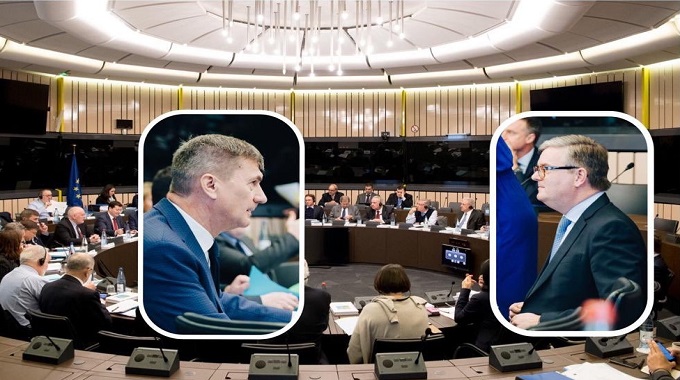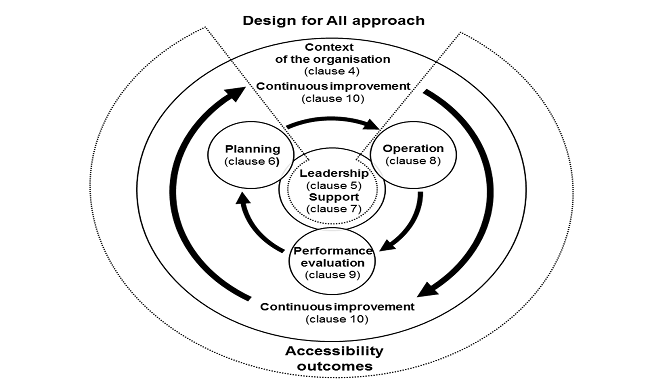The European Commission (EC) has recommended a set of operational steps and measures to ensure a high level of cybersecurity of 5G networks across the EU. The recommendations are a combination of legislative and policy instruments meant to protect our economies, societies and democratic systems. With worldwide 5G revenues estimated at €225 billion in 2025, 5G is a key asset for Europe to compete in the global market and its cybersecurity is crucial for ensuring the strategic autonomy of the Union.
At national level, each Member State should complete a national risk assessment of 5G network infrastructures by the end of June 2019. Member States have also been urged to update existing security requirements for network providers and include conditions for ensuring the security of public networks, especially when granting 5G spectrum licenses.
At EU level, Member States should exchange information with each other and with the support of the Commission and the European Agency for Cybersecurity (ENISA), will complete a coordinated risk assessment by 1 October 2019.
New CENELEC standard: With EN IEC 63000:2018, European environmental standards conquer the world
The European Union (EU) has one of the most advanced environmental legislations in the world. It is indeed a necessary step to reach the ambitious objective it has set itself: becoming a leader in the protection of the environment. The good news, both for Europe and the environment, is that sometimes, European standards or practices on environmental issues are adopted at the international level and recognised as globally valuable.
This is the case of recently approved EN IEC 63000:2018. CENELEC has adopted this IEC-made standard, dedicated to providing guidance on the technical documentation for the assessment of electrical and electronic products (EEE) with respect to the restriction of hazardous substances. But, in turn, EN IEC 63000 is extensively based on EN 50581:2012, a fully European harmonised standard developed to implement the EU’s Directive 2011/65/EU on the “restriction of the use of certain hazardous substances in electrical and electronic equipment”, also known as RoHS Directive.
The Guide for referencing standards has been developed in the frame of the Joint Initiative on Standardization within JIS Action 11 ‘Pilot Project on Increased use of Standards in Public Procurement to better implement the public procurement Directives’, under the leadership of the Swedish Standards Institute (SIS), and has been financed by the European Commission. It aims at guiding public procurement officers across Europe on how they can better reference standards in public procurement. The Guide has been drafted with inspiration gathered from similar guides published in Spain and in Denmark in 2017 and with the support of the consultancy organization DanSense. This material was redeveloped, evaluated and scrutinized by an expert panel in three separate rounds in 2018.
European Committee for Standardization (CEN) published a new standard EN 17161:2019 ‘Design for All - Accessibility following a Design for All approach in products, goods and services - Extending the range of users’. This European standard aims to help organizations align with a consistent approach to address accessibility for persons with disabilities. It specifies requirements that can enable an organisation to design, develop and provide products, goods and services that can be accessed, understood and used by the widest range of users including persons with disabilities.’
This standard is the result of the European Commission Standardization Request M/473 to include ‘Design For All’ in relevant standardization initiatives. The requirements set out in this standard are generic and are intended to be applicable to all relevant parts of all organizations, regardless of type, size or product(s), good(s) or service(s) provided.
The European Patent Office (EPO), the European Committee of Standardization (CEN) and the European Committee for Electro-technical Standardization (CENELEC) have signed a memorandum of understanding (MoU) to enhance the support they provide to industry and stakeholders in Europe and beyond in the field of standard-essential patents.
This is the first MoU between the organizations who will now work together to enhance knowledge about the relationship between standardization and patents. The purpose of this collaboration is to support inventors, innovators, researchers and industry on standard-essential patents (SEPs) in different areas of technology by promoting the dissemination of technical standards including relevant patented technologies. The agreement complements the established co-operation in this field between the EPO, the European Telecommunications Standards Institute (ETSI) and the European Commission (EC).
New Intelligent transport rules adopted in Europe
The European Commission has adopted new rules stepping up the deployment of Cooperative Intelligent Transport Systems (C-ITS) on Europe’s roads.
The new technology will allow vehicles to ‘talk' to each other, to the road infrastructure, and to other road users – for instance about dangerous situations, road works and the timing of traffic lights, making road transport safer, cleaner and more efficient. The new rules are in line with the proposals on clean mobility introduced by the Juncker Commission, are a further step for modernising the European mobility sector, preparing it for climate neutrality in the second half of the century and contributing to the EU's long-term goal of moving close to zero fatalities and serious injuries by 2050 ("Vision Zero").
The ETSI Industry Specification Group for cross-cutting Context Information Management (ISG CIM) has released its main specification GS CIM 009 for Next Generation Service Interfaces (NGSI)-LD API, particularly targeting smart city applications and government services (use cases available in GR CIM 002).
The new specification defines a simple way to send or request data, using a serialization format (JSON-LD) which is very familiar to many developers so that rapid adoption is facilitated. The important feature is that data and its context such as the meaning, relationships, source or licensing of that data, etc. are transmitted together. The approach can directly re-use work on matching terminology for things and services which is ongoing in multinational collaboration with many standards organizations. Interworking of NGSI-LD with the existing oneM2M platform and standards is already partially possible and will be refined further in future releases.










